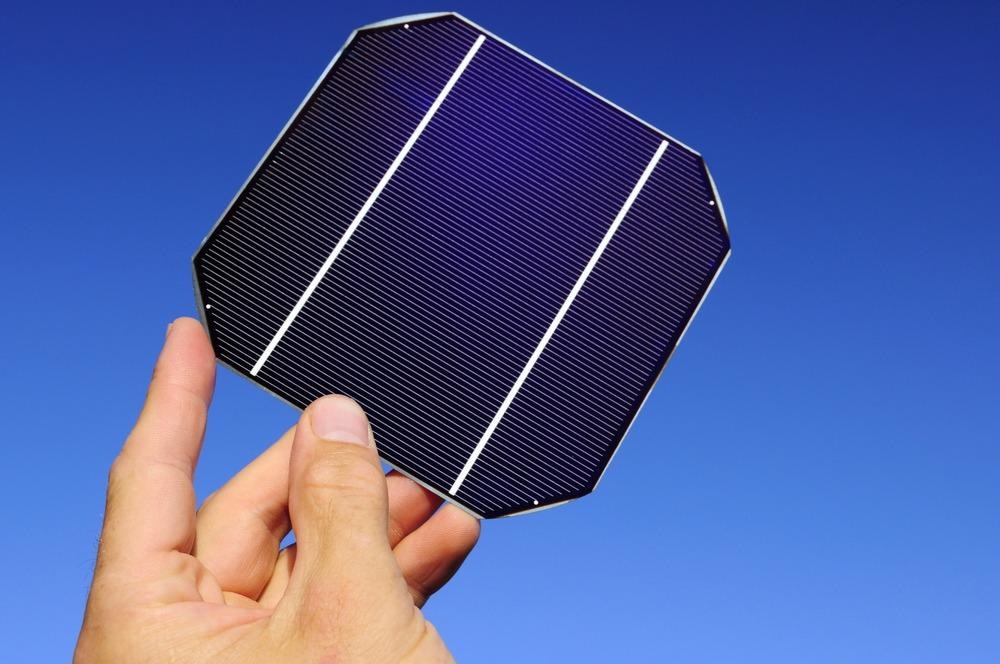This article provides an overview of the materials that are used to produce photovoltaic cells for the production of renewable energy, as well as new research that proposes the use of novel materials.

Image Credit: neijia/Shutterstock.com
A solar photovoltaic cell is a renewable energy technology with significant potential to resolve the existing energy challenges. Solar photovoltaics are reliable, clean, scalable, provide affordable energy, and are cost-effective in the long term.
Countries such as China, Japan, the United States, Germany, and the United Kingdom are shifting towards novel photovoltaic materials for the improved performance of existing solar energy systems. This article reviews different solar photovoltaic materials and also discusses recent developments in solar cells.
Solar photovoltaics are semiconductor materials that absorb energy and transfer it to electrons when exposed to light. This absorbed energy allows electrons to flow through the material’s bandgap as an electrical current. Further, this current is extracted through conductive metal contacts and used to power various electrical sources.
Materials Used in Solar Panels
The first generation of solar photovoltaic modules was made from silicon with a crystalline structure, and silicon is still one of the widely used materials in solar photovoltaic technology. The research on silicon material is constantly growing, which is mainly focused on improving its efficiency and sustainability. Monocrystalline and multi-crystalline silicon are the two most basic types of crystalline silicon used in solar photovoltaics.
Monocrystalline silicon materials are used for their higher efficiency compared to multi-crystalline silicon materials. The advantage of multi-crystalline silicon materials is that they are less expensive, hence used by manufacturers for low-cost solar energy systems.
Amorphous silicon is a non-crystalline allotropic form of silicon that has been widely used in solar photovoltaics. It is the most commonly used thin-film technology, but the limitation of this material is that it is susceptible to degradation. Amorphous silicon carbide, amorphous silicon germanium, microcrystalline silicon, and amorphous silicon nitride are the different types of amorphous silicon used.
Cadmium and tellurium are also used to develop solar photovoltaics. They are mixed in a specific ratio to develop cadmium telluride solar cells and are considered the most effective thin-film material due to their ideal bandgap of 1.45 eV and longer stability.
Compound semiconductor solar photovoltaics are made using gallium and arsenide. They are similar to silicon cells but are more efficient, thinner, and less dense than monocrystalline and multicrystalline silicon cells.
Aluminum, antimony, and lead are also used in solar photovoltaics to improve the energy bandgap. The improvement in the energy bandgap results from alloying silicon with aluminum, antimony, or lead and developing a multi-junction solar photovoltaic. The other materials used to develop advanced solar photovoltaics are copper, indium, gallium, and selenide, and they are mainly used to improve solar photovoltaics’ efficiency and heat removal.
Carbon nanotubes (CNT) are a type of nanomaterial used in solar photovoltaics to improve their properties. The application of CNT enables manufacturers to develop transparent conductor material and provides improved current. The CNT used in solar photovoltaics has a hexagonal lattice carbon structure and converts up to 75% of solar energy into electrical energy.
Organic dyes are also a potential material in novel solar photovoltaics to develop a wider bandgap. The use of organic dyes facilitates the development of sustainable solar photovoltaics as inorganic materials are challenging to recycle and reuse. TiO2 is also used in new solar photovoltaics for improved performance and heat removal.
Hybrid cell solar photovoltaics are developed by combining crystalline and non-crystalline silicon. Although they have higher efficiency compared to conventional solar cells, their manufacturing process is complex.
Recent Research
In a recent study published in the journal Solar RRL, researchers from China reviewed solar photovoltaic materials that can be used with civil structures to generate power without any additional setup. The materials reviewed by the researchers were mainly made of organic solvents and transparent. Transparent solar photovoltaics can be used on areas such as windows and outer walls to generate power.
In another recent study published in the journal Nano-Select, researchers from China discussed the design of flexible solar panels. The materials used to develop the flexible solar panels were organic solvents, nanofiber materials, and nanowires of metals. Flexible solar panels find use in a wide range of applications such as flexible electronics, automobiles, and space applications.
Conclusions
Solar energy is considered to be a significant renewable energy technology and can replace non-renewable energy sources. The solar photovoltaic cell is responsible for converting solar energy into electrical energy and is a critical component of the solar energy system.
The use of new materials improves the overall performance of the solar energy system and enables its application in new areas. Future research needs to focus on materials that can make solar photovoltaics cost-effective and sustainable.
References and Further Reading
Li, P., Wang, W., Li, H., Miao, R., Feng, X., Qian, L., and Song, W., 2021. Foldable solar cells: Structure design and flexible materials. Nano Select, 2(5), pp.865-879. https://onlinelibrary.wiley.com/doi/10.1002/nano.202000163
Li, Z., Ma, T., Yang, H., Lu, L. and Wang, R., 2021. Transparent and colored solar photovoltaics for building integration. Solar RRL, 5(3), p.2000614. https://onlinelibrary.wiley.com/doi/10.1002/solr.202000614
Gul, M., Kotak, Y. and Muneer, T. (2016) ‘Review on the recent trend of solar photovoltaic technology, Energy Exploration & Exploitation, 34(4), pp. 485–526. https://journals.sagepub.com/doi/10.1177/0144598716650552
Disclaimer: The views expressed here are those of the author expressed in their private capacity and do not necessarily represent the views of AZoM.com Limited T/A AZoNetwork the owner and operator of this website. This disclaimer forms part of the Terms and conditions of use of this website.